An Arabic name
Though it was the Muslims who put Madrid on the map in 860 by building a fortress to protect the kingdom of Al-Andalus from Christian raiders, save for a tiny section of the citadel wall, there is little physical trace of their presence in the city today. However, that isn’t to say they haven’t left their mark; along with around 8% of Spanish vocabulary, the name for Madrid itself comes from Arabic (Mayrit, which means ‘place of many springs’). So too does the name of the arch-diocese’s patron, the Virgin of Almudena, which comes from Almudayna, the Arabic term for citadel. As tomorrow (November 9) marks the feast of Our Lady of Almudena I thought I’d take a look at the legend surrounding this figure.
The story goes that when the Muslim troops arrived, Madrid was a Visigoth settlement. Afraid the invaders would desecrate their religious artifacts, the citizens of this settlement hid a treasured wooden figurine of the Virgin Mary within the city walls. When Alfonso VI conquered the citadel on his way his way to Toledo in 1083, the Virgin was recovered. Through the power of prayer the wall crumbled revealing the Virgin holed up with candles still burning beside her. Much jubilation ensued and from thereon after the Virgin of Almudena was revered as the city’s spiritual saviour.
A capital without a cathedral
Built on the site of the old Arabic fortifications, a cathedral dedicated to the Virgin now stands opposite the palace. Completed in 1993, this building has had a short but troubled history. Construction began in 1890 when the powers that be decided that it was high time for the capital to get a cathedral of its own. However, work on it was halted after civil war broke out and not taken up again until 1950 when the new architect decided to make the baroque exterior match the façade of the palace next door. The result is a mishmash that has offended the aesthetic sensibilities of many a Madrileño.
However, when I visited I had to admit that I didn’t find it irredeemably hideous. While there is some truly horrible 21st century religious artwork, the ceilings and stain glass windows in the interior are actually pretty groovy. But all this is so much window dressing for the highlight of any visit, which is, of course, the statue of the Virgin. Carved somewhere between the 15th and 16th century, the late Gothic wooden figure is pretty old, but nowhere near old enough to be the original Virgin, a fact that did not seem to bother the line of devotees waiting patiently to pay their respects.
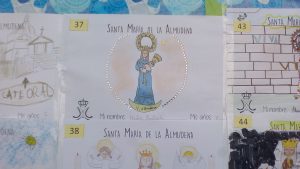
In the cathedral’s museum other incarnations of the Virgin were on display – as well as a rather splendid portrait of Alfonso XII’s wife Maria done entirely in hair (I’m a sucker for such oddities). Visitors could also vote on children’s portraits of the Virgin – I liked the bling version pictured. As I left another statue of Almudena was being attached to a litter with duct tape in preparation for being paraded around the city the next day, while outside people were lining up to offer flowers for the upcoming procession.
Away from this frenetic activity just down the hill from the cathedral are the city’s original Arabic walls. The remains can be viewed up close on weekends and public holidays, but on this particular day I had little option but to gaze at it wistfully from behind iron bars and wonder…
The archeological evidence
Leaving aside the miraculous crumbling of walls and super long-lasting candles, there’s so much about the legend of Almudena that doesn’t add up. Take, for instance, the fact that there is no archeological evidence to suggest that Madrid was ever a Visigoth settlement. Furthermore, the idea that this purported village’s Christian populace were afraid that their Virgin would be desecrated is also rather ludicrous. Even if they’d been ignorant of the conquering army’s policy of religious tolerance, you’d think they might have found this out during the 200 odd years they lived under Muslim rule and taken the opportunity to disinter their precious wooden idol. What do you think? Rather than going astray, could this wooden object never have existed in the first place?

Keen to find out more about the history of Madrid? See another side of the city with one of my unique walking tours.
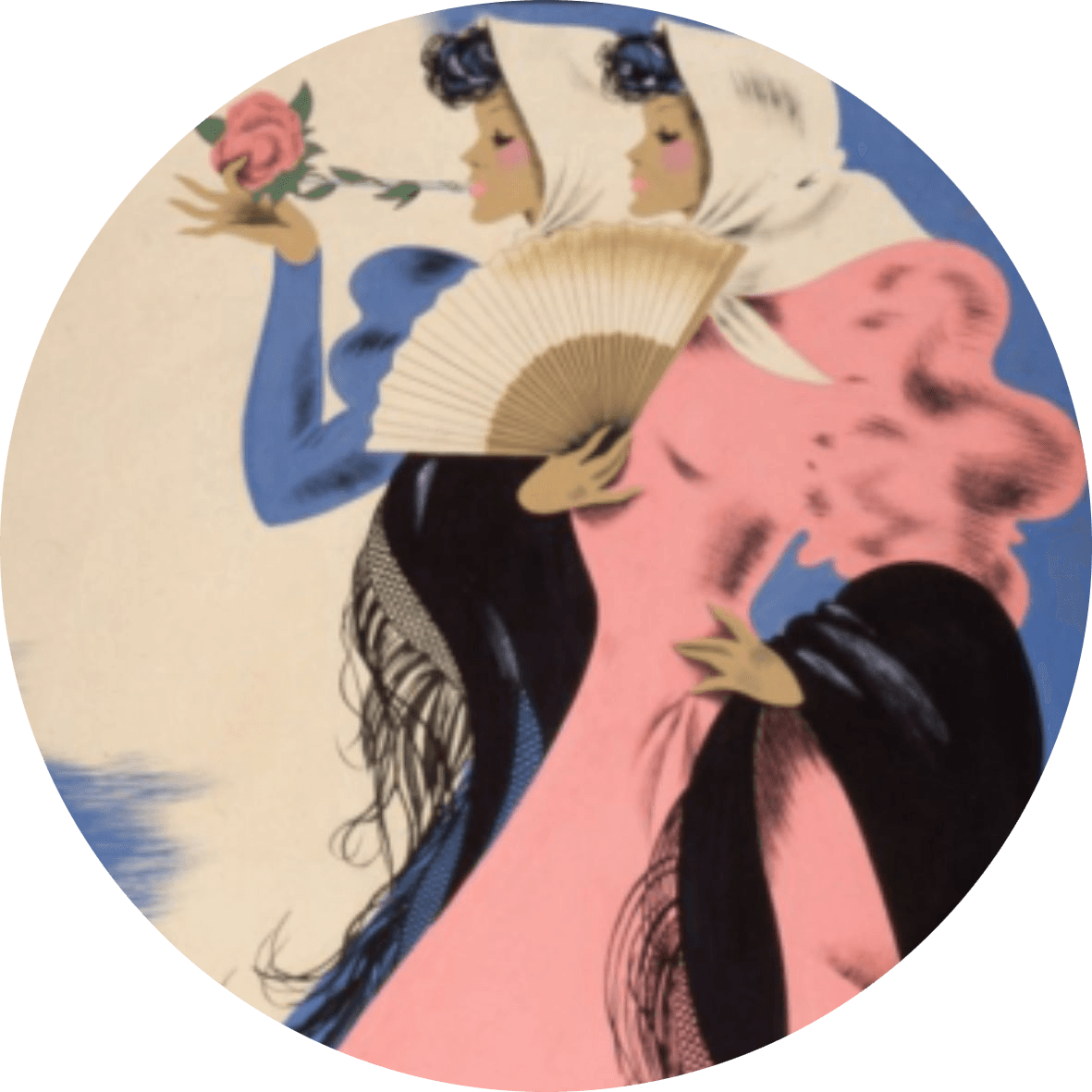
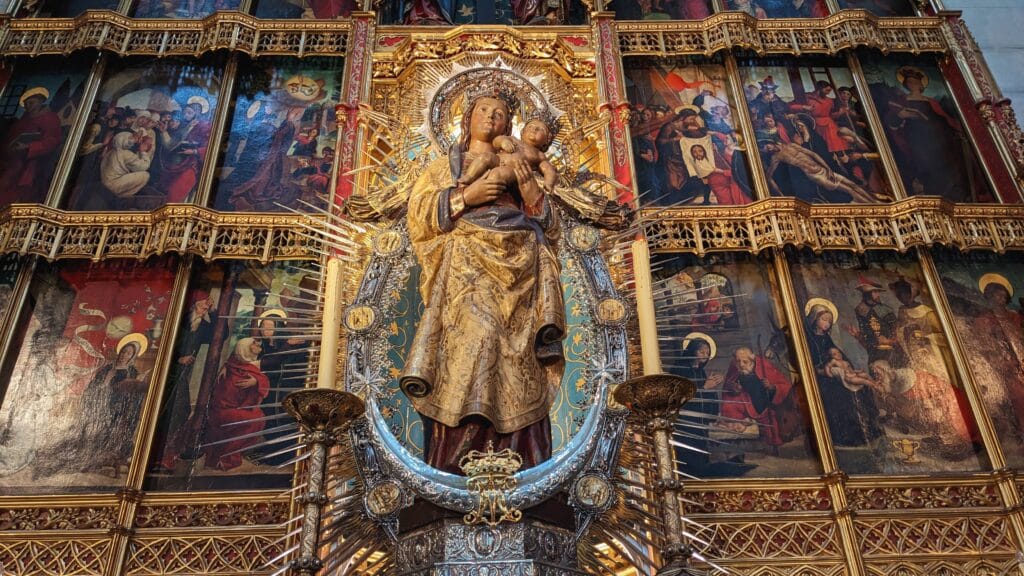

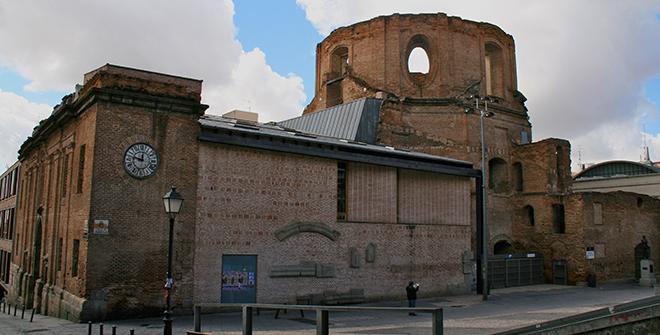

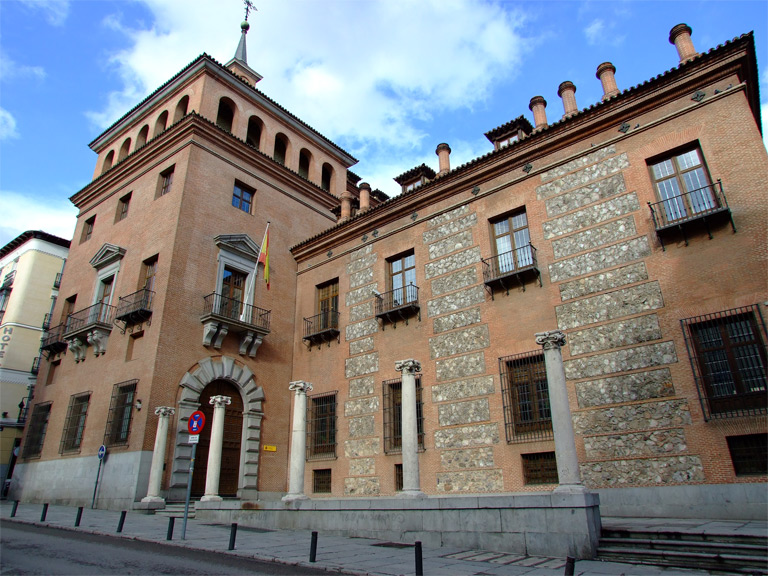
I too have been trying to figure out what happened to the original statue, assuming it even existed. Obviously the existing statue was created much later. What’s curious is that the painting of the Virgin of the Flor de Lys, which was supposedly painted in 1085 when Alfonso VI recaptured the city but before the wooden statue was rediscovered in 1087. If they didn’t find the statue, why would they have covered up the painting for over 500 years? And if they did find the statue, where is it now?
Hi Larry. I hadn’t heard of the Virgin of Flor de Lis, but now you’ve brought my attention to it I absolutely HAVE to go see it (love the crypt in any case). You mention it was covered up, so does that mean it was recently rediscovered? Thanks for commenting.
I saw the Virgen de la Flor de Lis (or Virgin of the Fleur de Lys or Virgin of the Lily) painting in 1971 in the Crypt of the Cathedral and copied down the plaque next to it. I also found a couple of websites about it, including: https://www.elpandelospobres.com/noticias/flor-de-lis-la-imagen-mas-antigua-de-la-virgen-conservada-en-madrid . Alfonso VI had it painted on a wall in the original Iglesia de Santa Maria de la Almudena in 1085 or thereabouts when they couldn’t find the Virgen of the Almudena statue, so the painting is Romanesque and actually portrays his wife, the queen, as the virgin. I found another website that asserts that the original wooden statue was lost in a fire at the old church of Santa Maria de la Almudena during the reign of Felipe II, so that presumably accounts for the late-medieval statue now in the cathedral created to replace it.
Pingback: The "reconquest" of Madrid - The Making of Madrid
Pingback: The Reconquest That Never Was - The Making of Madrid